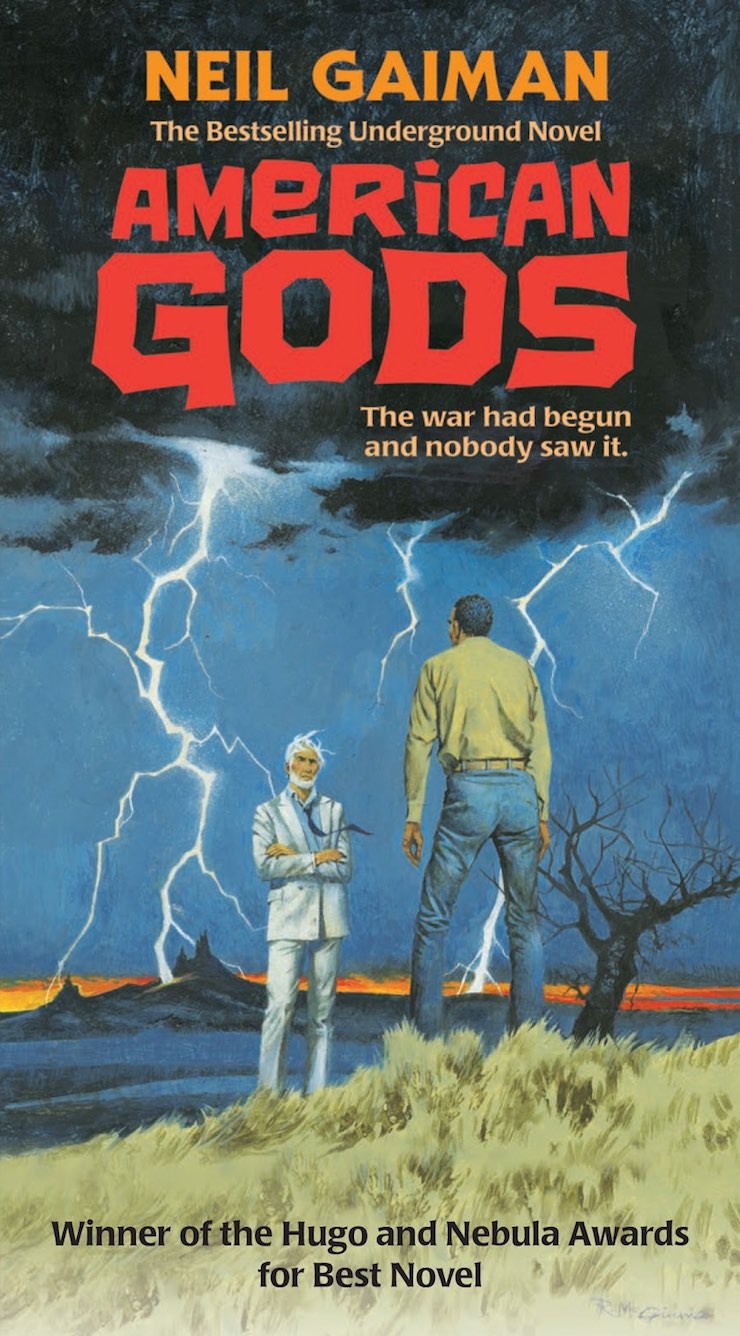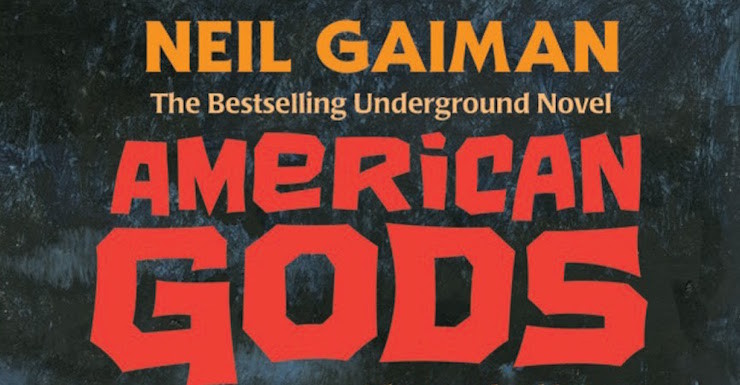We’re getting a new paperback edition of Neil Gaiman’s American Gods! Gaiman’s publisher was already planning to put out a new edition of the “Author’s Preferred Text” to coincide with Starz adaptation of the novel, but since excitement for the show has exceeded all expectation, they’ve actually run out of books to sell, which means we’re getting the new edition months sooner than expected.
But that’s not all! About a year ago, Gaiman and his editor had a conversation about the unique beauty of the painted paperback covers of the 1950s, ’60s, and ’70s, particularly those of Robert E. McGinnis, who created iconic covers for Ian Fleming’s James Bond series. A few days later, Gaiman learned that McGinnis was, in fact, still painting, and was, in fact, “intrigued by the commission”, and now we’re getting an entire series of Gaiman reissues with amazing retro covers!
But, wait, it gets even better. First, Gaiman also asked Todd Klein to join the project to create logos and choose fonts, and then the art began arriving:
Each painting from McGinnis was better than the one before. Each Logo and layout from Todd Klein was more assured and more accurate. These things are glorious…. You aren’t going to see the rest of the Robert E McGinnis covers for a little while (and each of them looks like a different kind of book from a different era).
We want to see them all yesterday! But for now, if you’re ready, here’s the new paperback American Gods cover, in all of its 1970s retro glory:

SO PRETTY. SO OMINOUS.
You can read more about the project over at Neil Gaiman’s Journal! The new paperback edition of American Gods will be available soon (and we’ll update you on the rest of the series as more are released) but in the meantime, you can also check out The Art of Robert E. McGinnis.











I love so many things about this cover: the tree, the lightning, everything about Mr. Wednesday. The thing that stands out to me the most right now is the fact that Shadow isn’t painted as a white guy. I always pictured him as white (mostly because I am) until they cast the TV show. If there was a different description of him in the book I must have missed it.
I wonder what time period people that read it for the first time after seeing this cover are going to think it’s set in.
@Daedylus:
Shadow in the novel is pretty clearly ethnically ambiguous; one of the very first comments about his appearance in the novel is a racist prison guard asking Shadow if he’s Latino, or a gypsy, or maybe has African-American ancestry. (Well, the guard asks all this using racist terms I’m not going to repeat here.) But on reflection it might be easy to miss because I think it only shows up in the occasional comment by other characters, not in any direct authorial description.
I rather like the cover, too — there’s a nice balance of the jagged lightning reaching down and the jagged tree reaching up, and the suggestion that Shadow is the most important of the two characters even though we can’t see his face (he’s larger than Wednesday, framed between the local peak in the landscape and the lowest of the clouds…).
@1, @2, also Shadow’s mother is described as having multiple sickle cell crises. That disease is relatively rare among caucasians and most common among people of African descent, with clusters also in the Indian subcontinent and Middle East. And I think at one point late in the book, there is a description of Shadow’s mother having brown skin. (But they are blink-and-you’ll-miss-it). I don’t know what Gaiman intended, but I picture his mother as African-American and him as mixed race.
Have they cast his mother yet (for the flashbacks?)
The fact that Shadow had a dark complexion, and that his mom was person of color, as folks have stated above, was mentioned in the text, although Gaiman didn’t dwell on it.
I do, however, think the term “mixed race” is somewhat inadequate for someone who is half human and half god.
Great cover! I did not think I would ever again see a new McGinnis cover, but am glad to find I was mistaken.
I’m not sure whether I would consider the work “underground”, but that cover is pretty fresh.
Is this the 10th anniversary edition? The one with the author’s preferred text and the extra 12,000+ words?